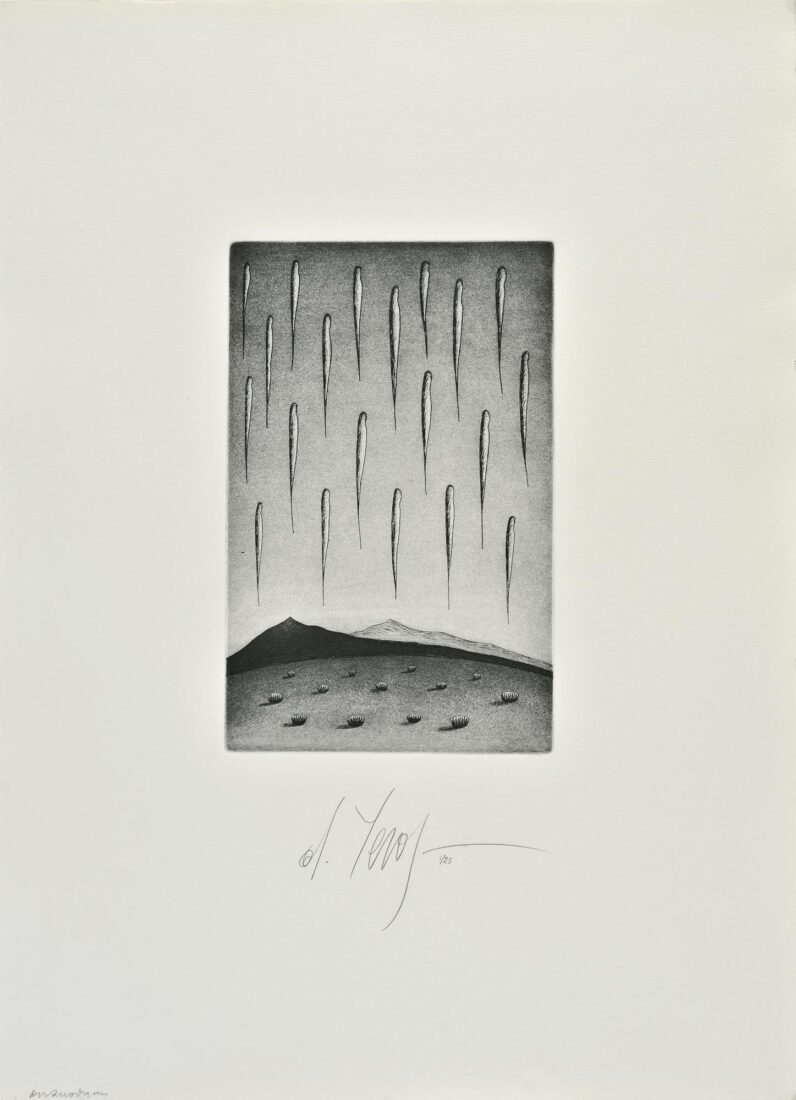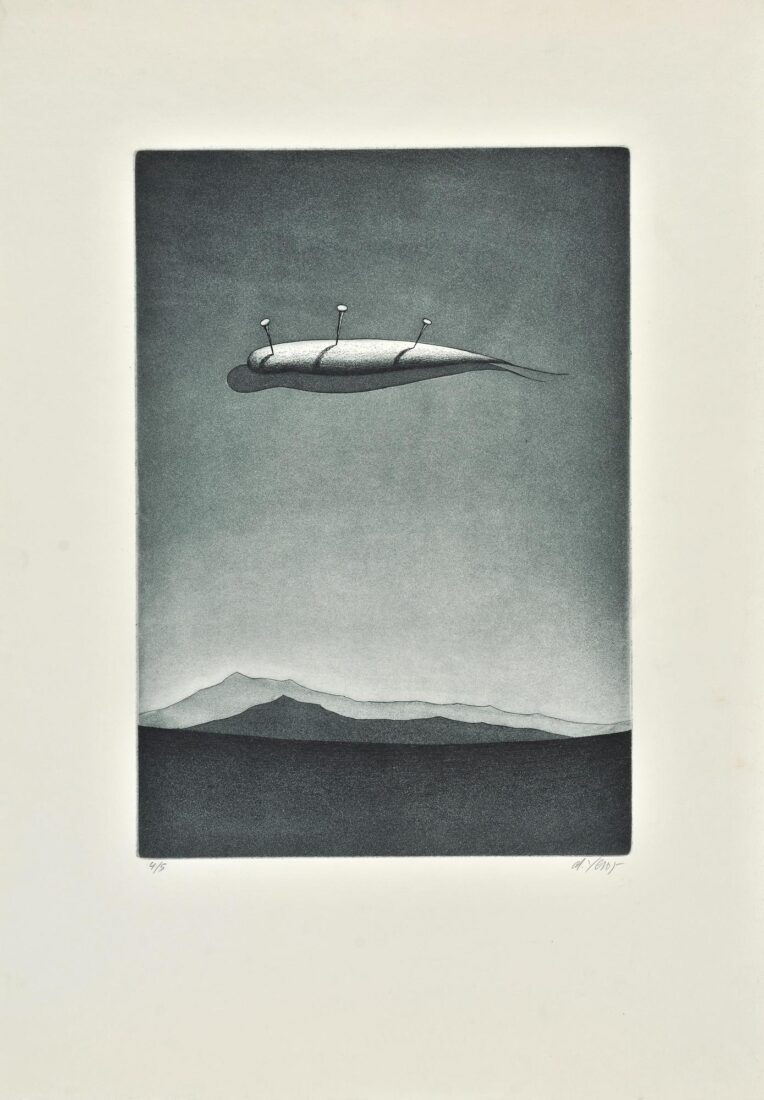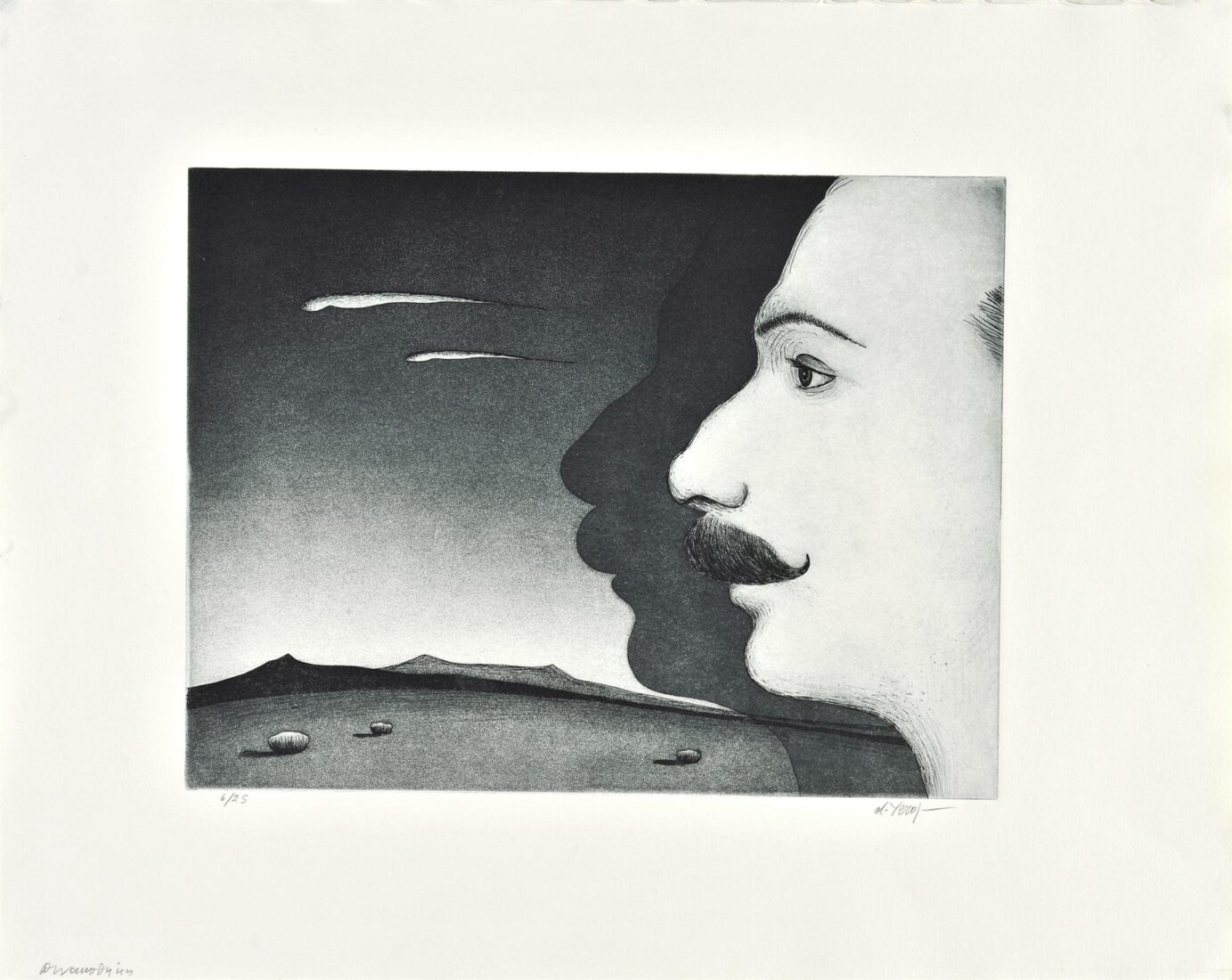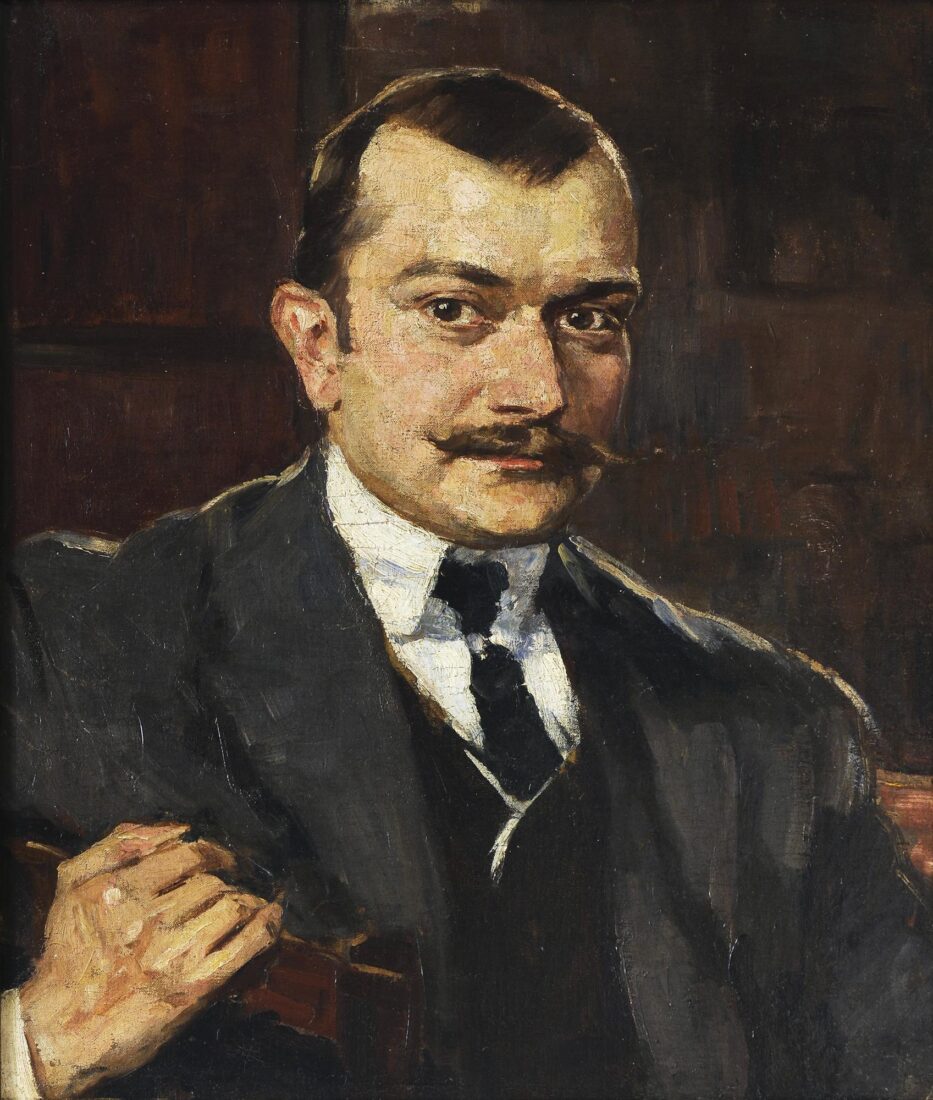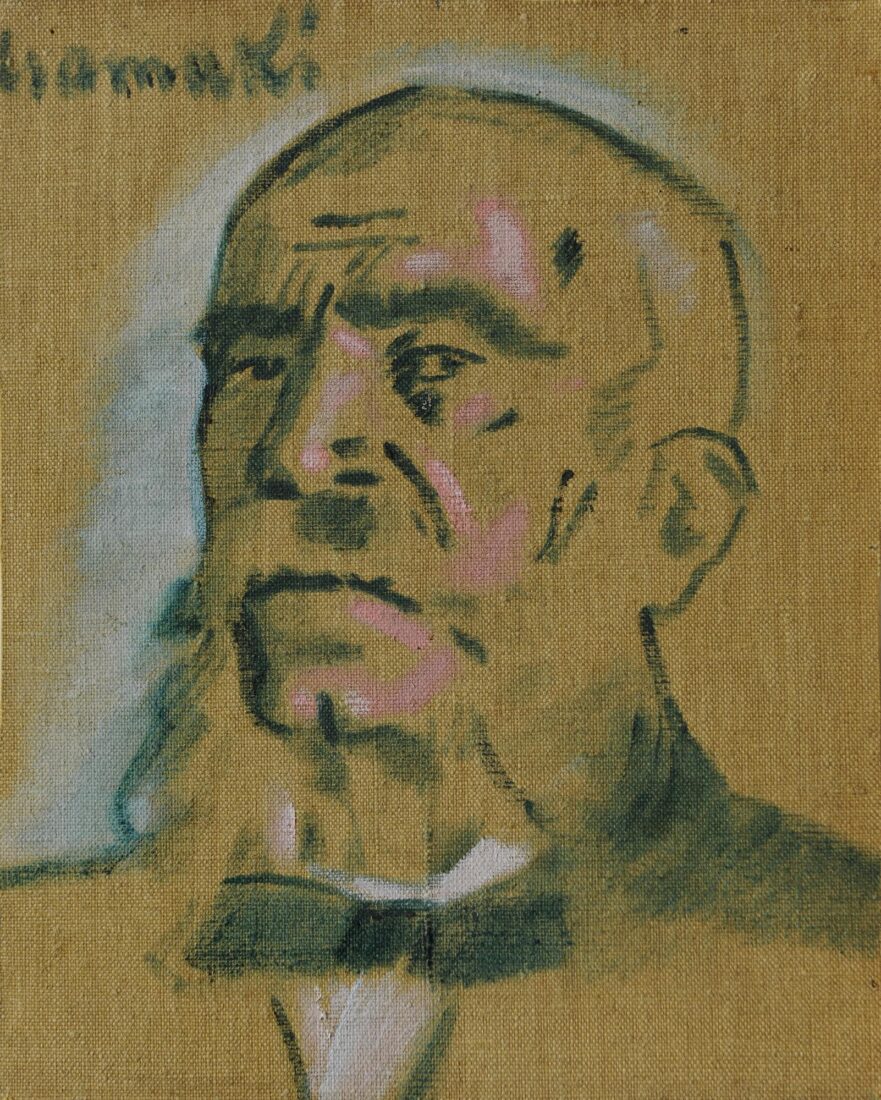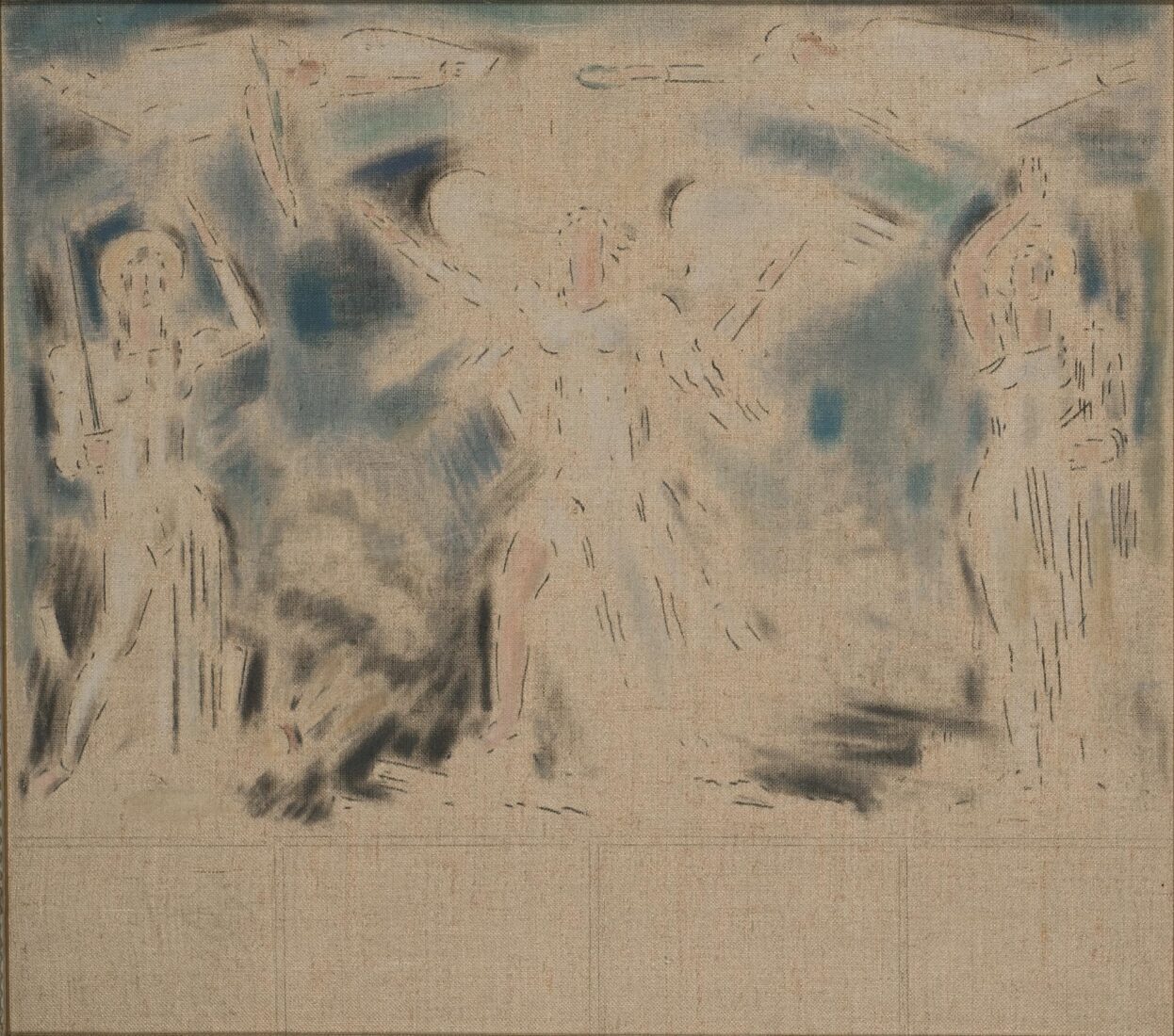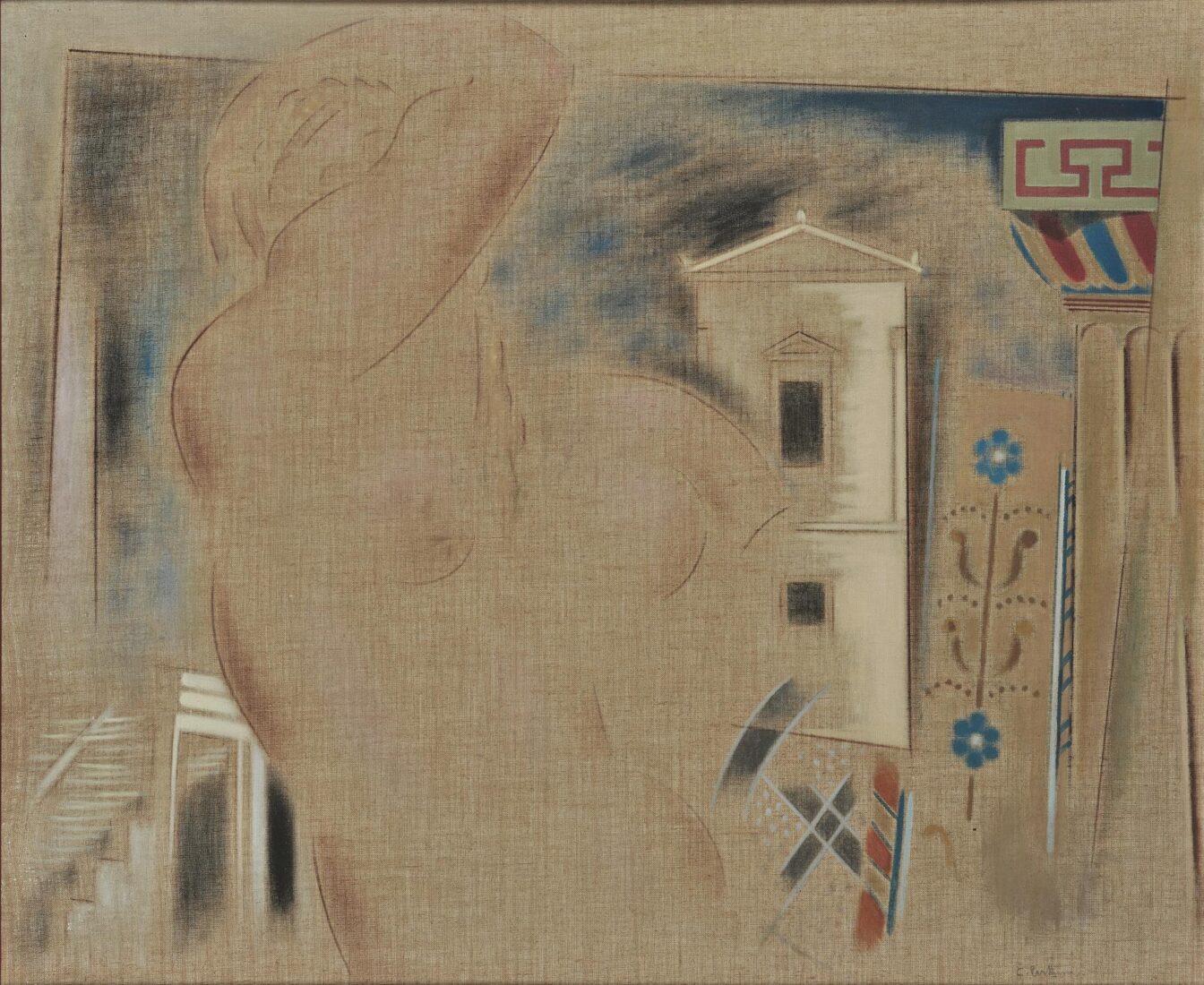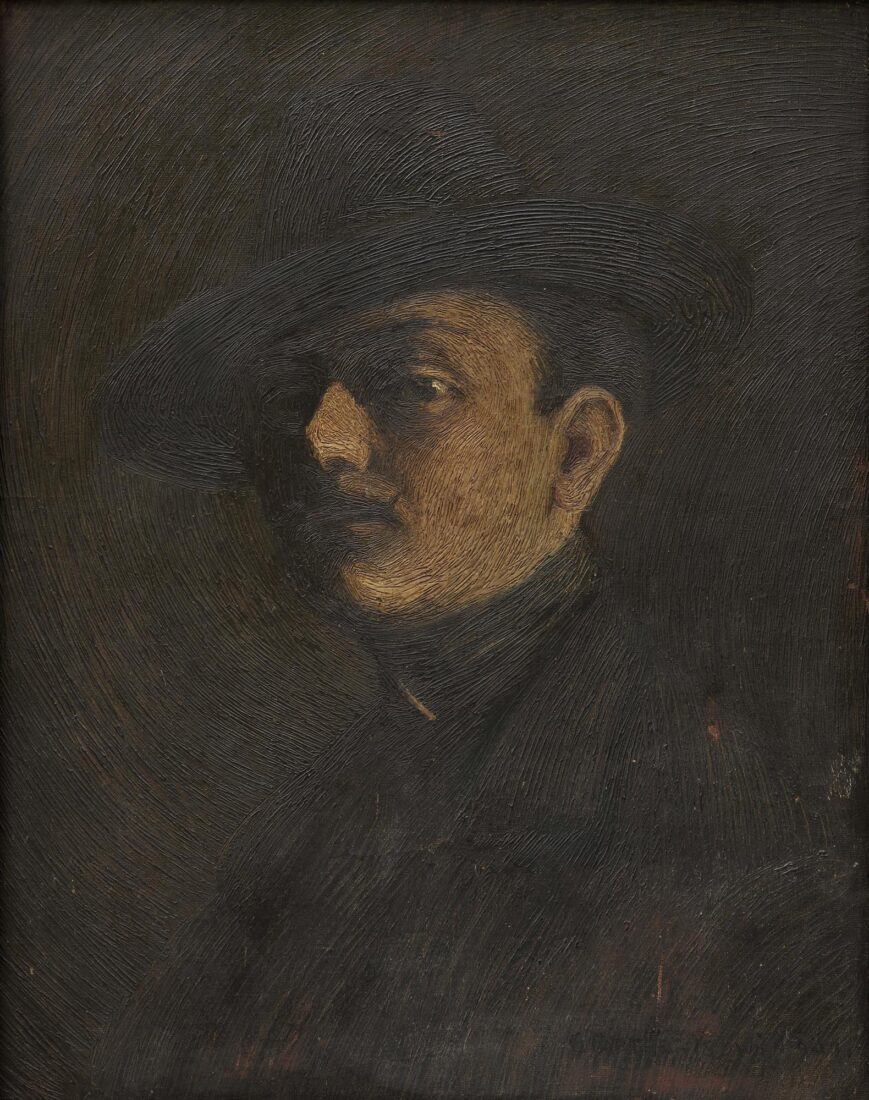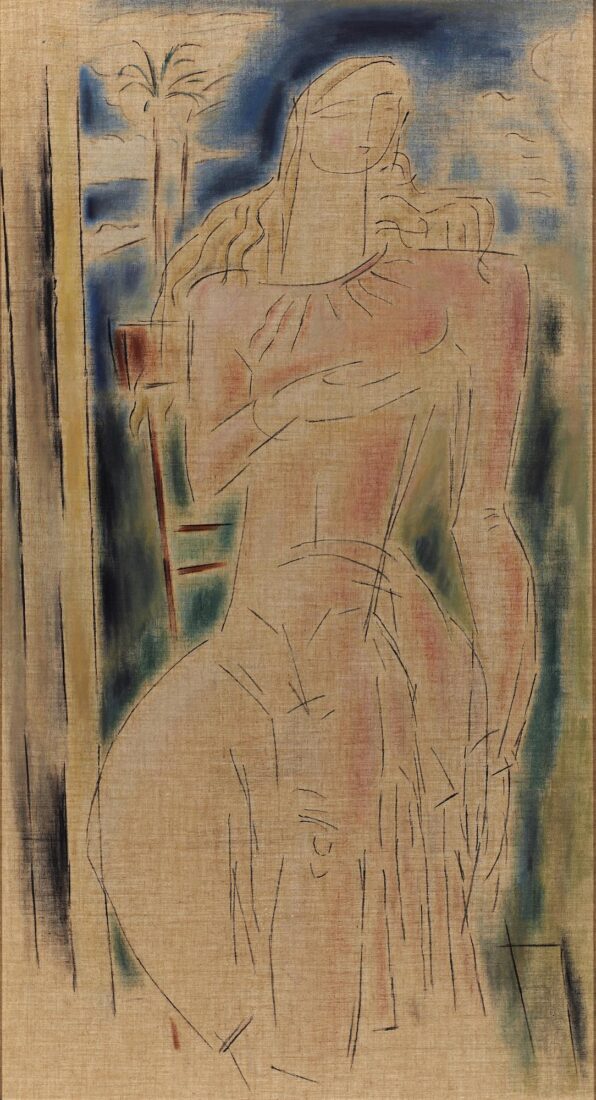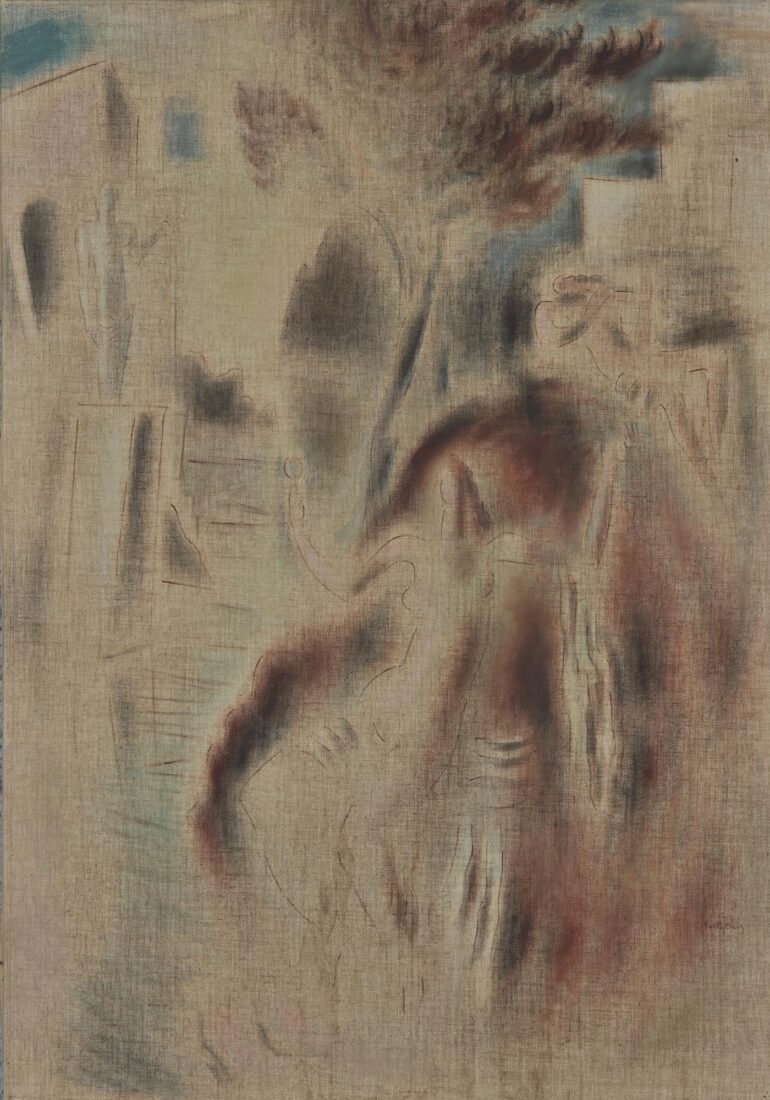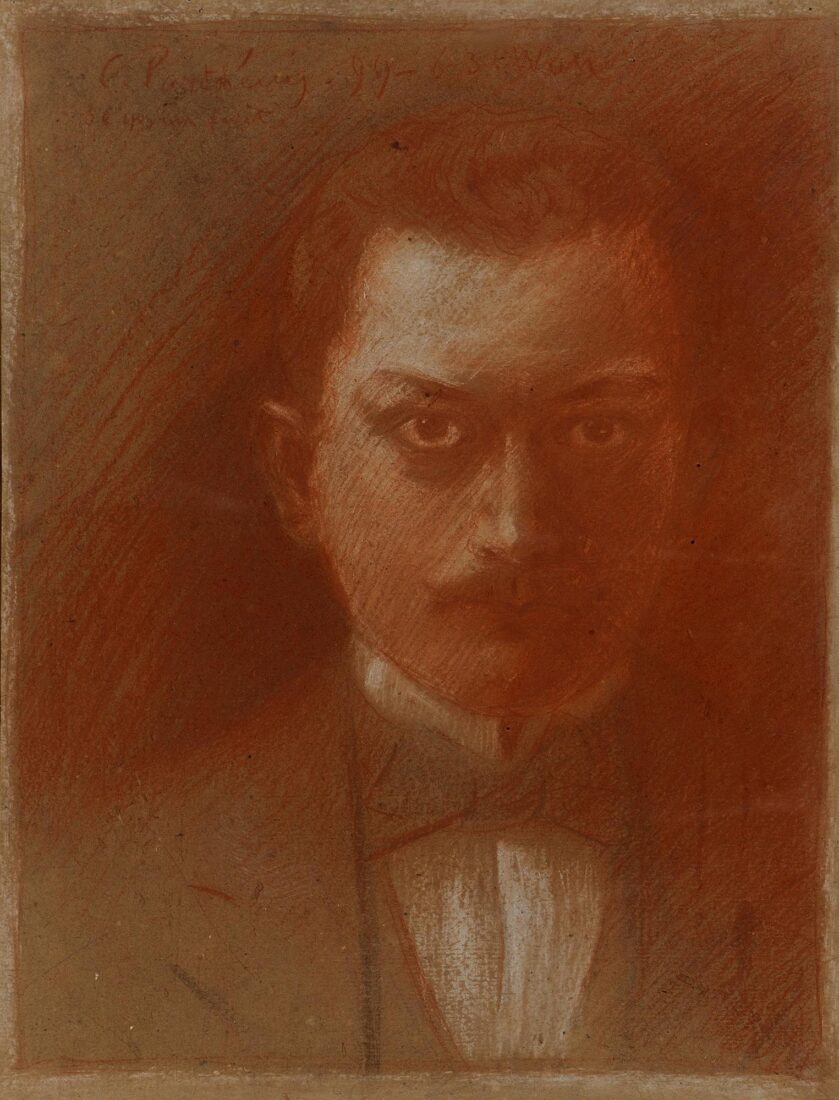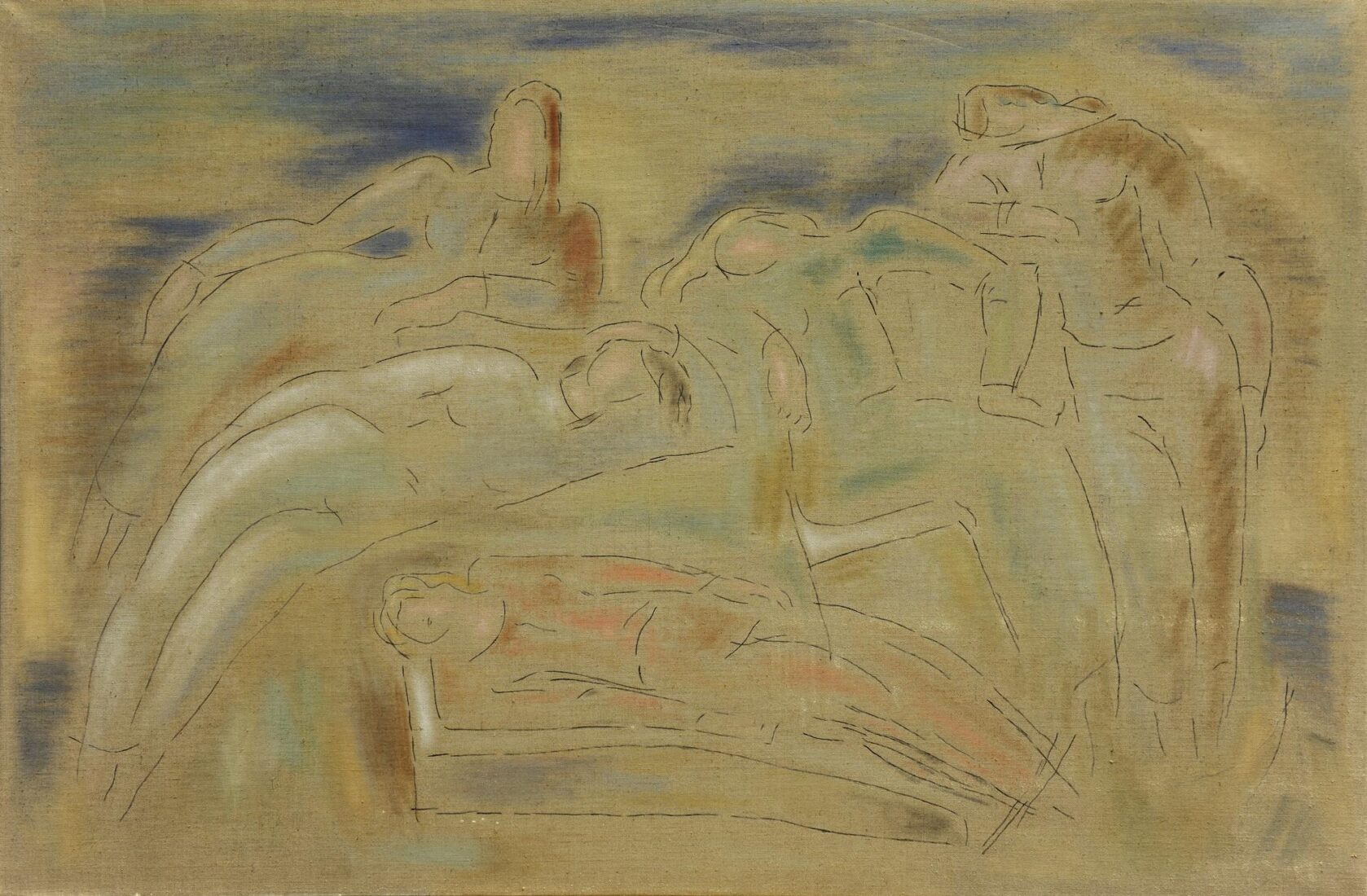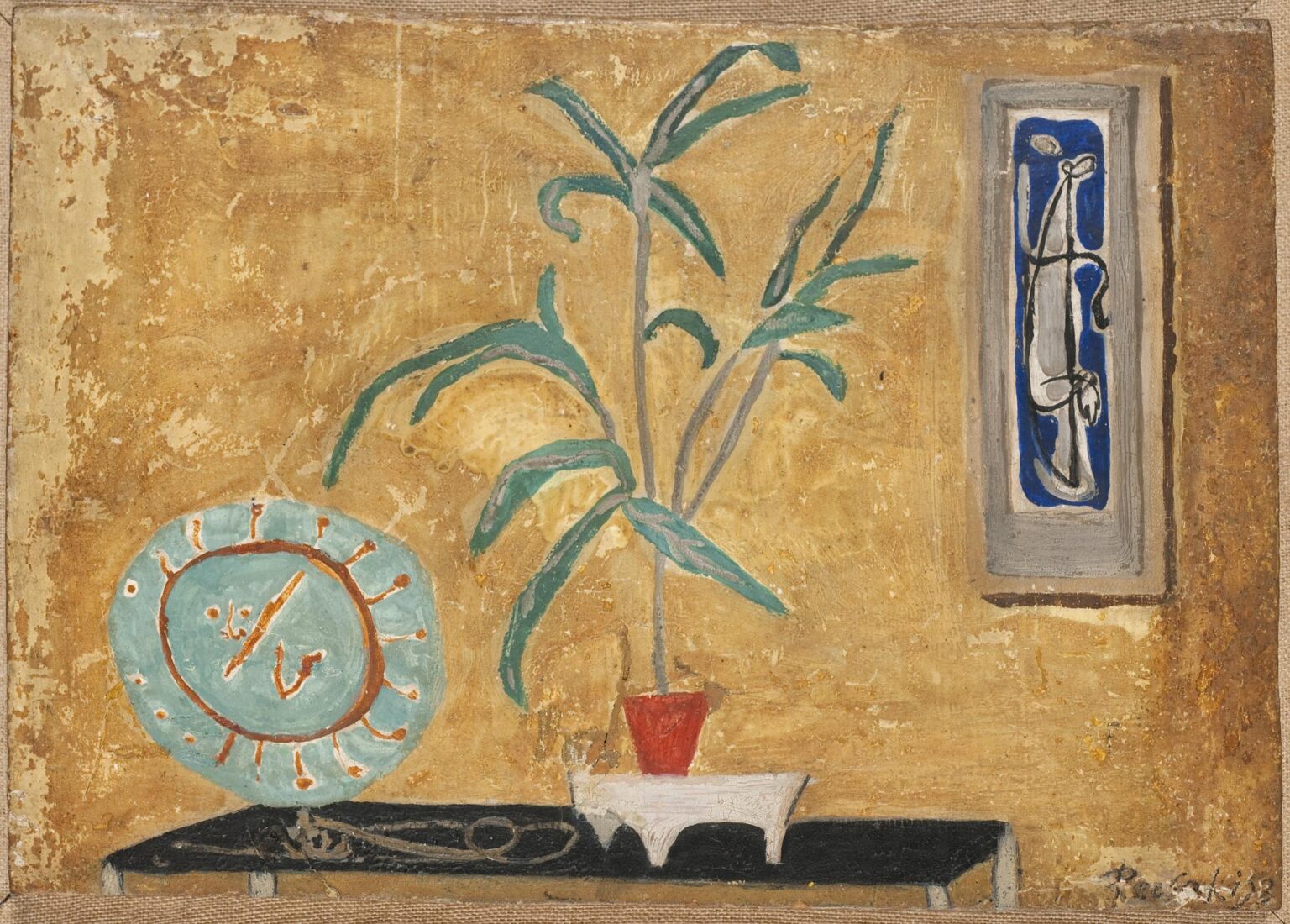

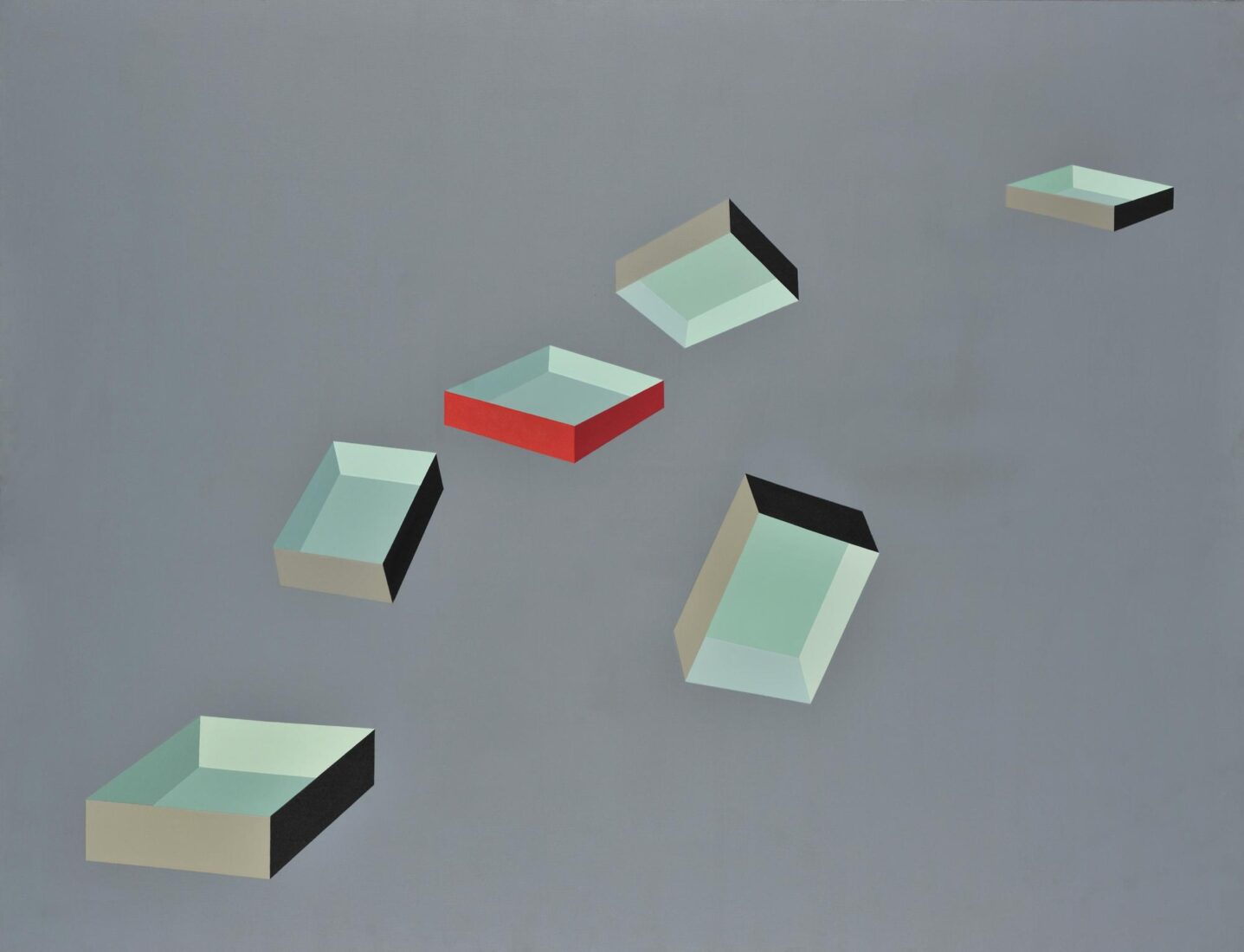
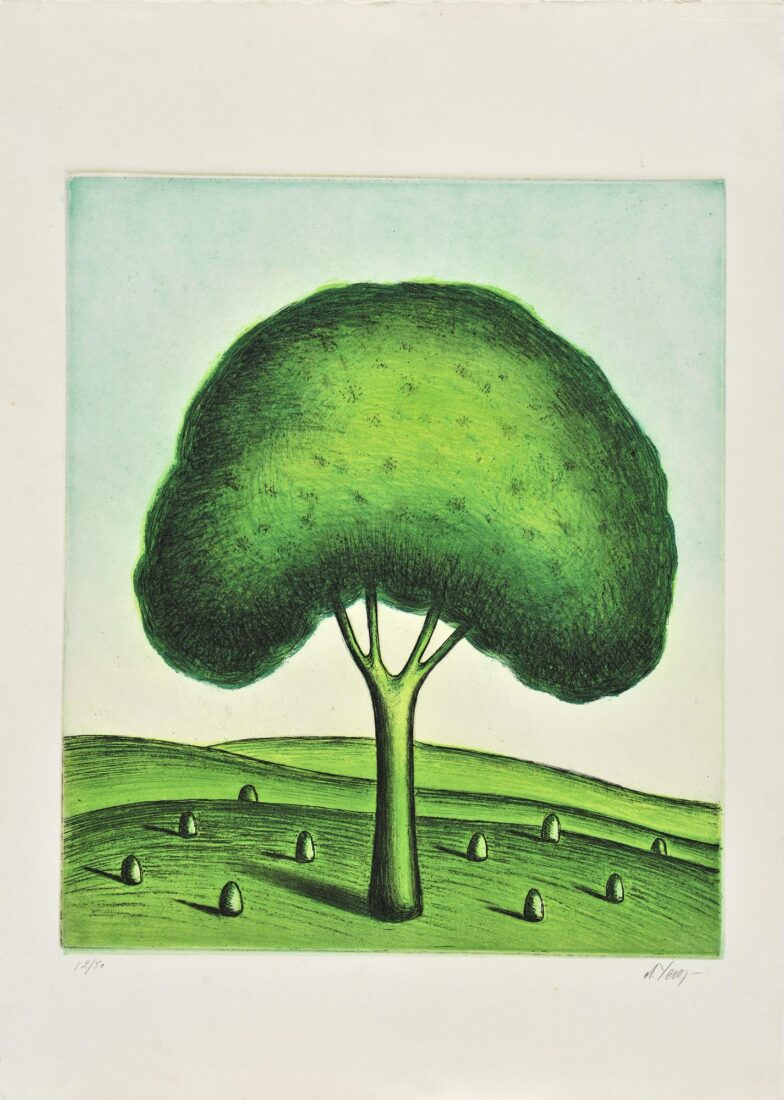
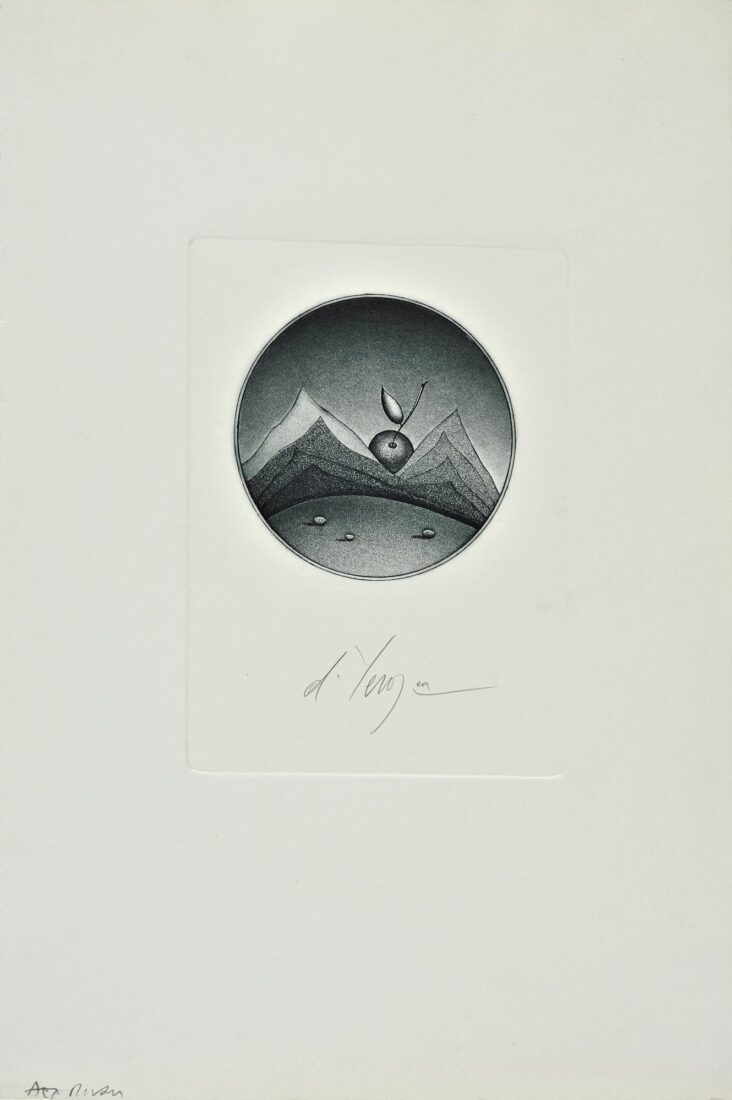
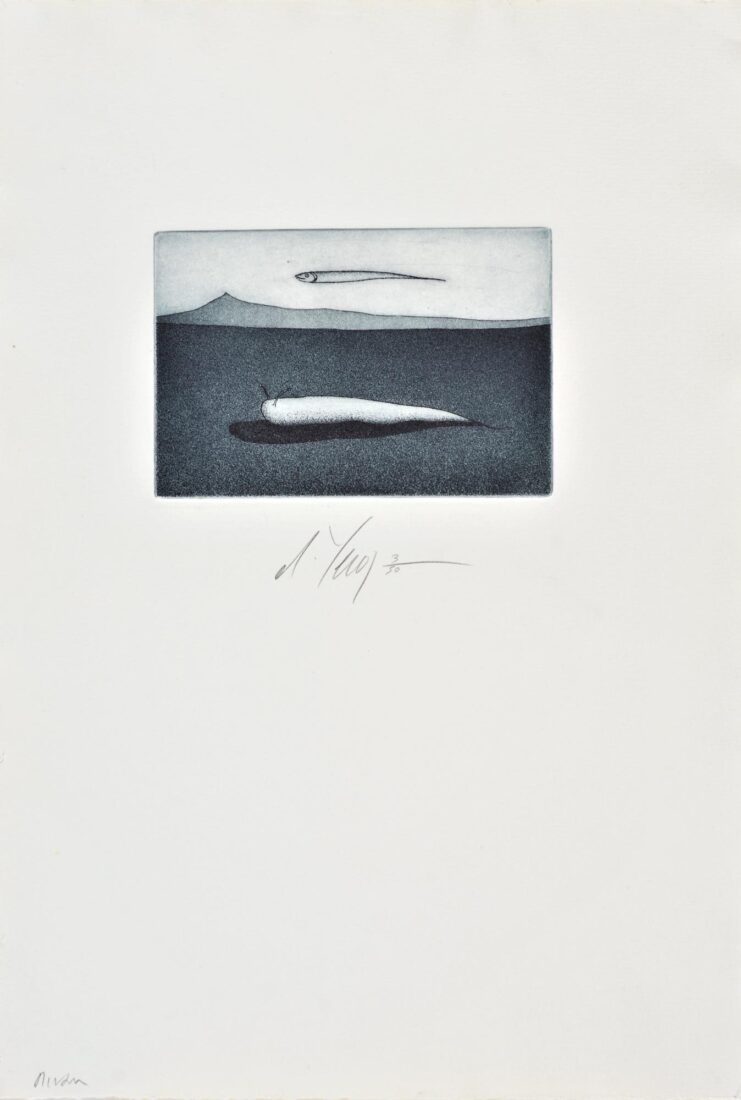
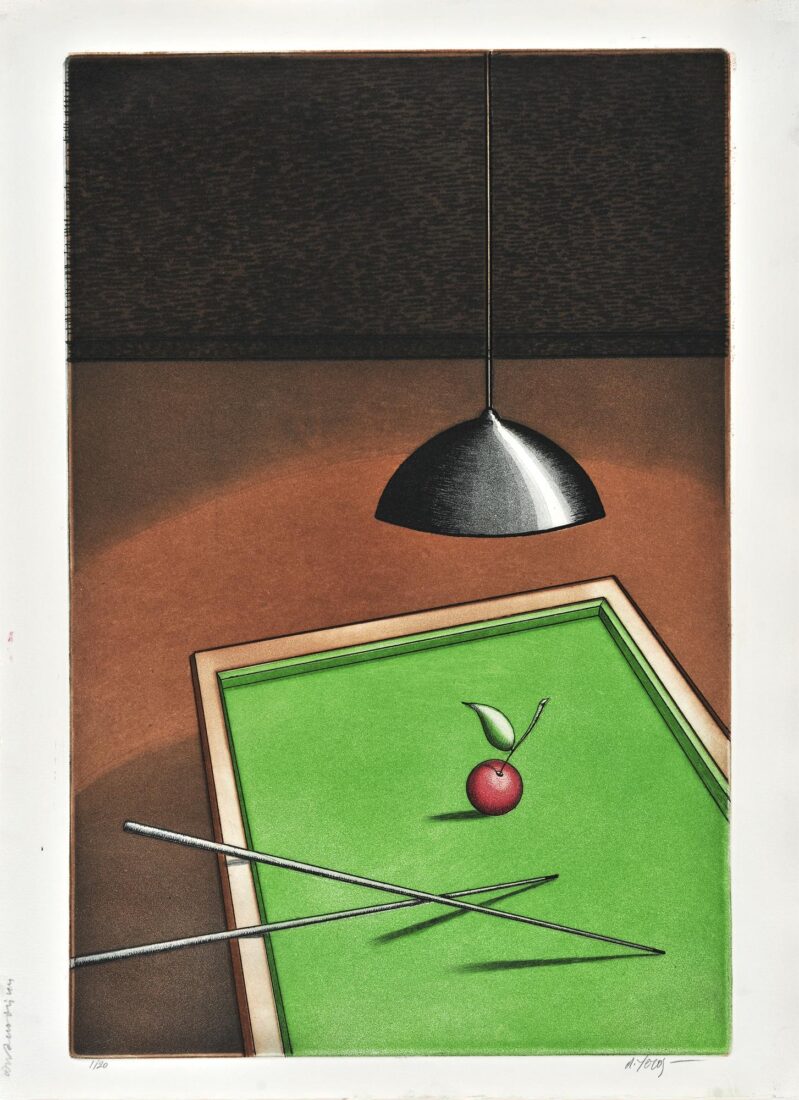
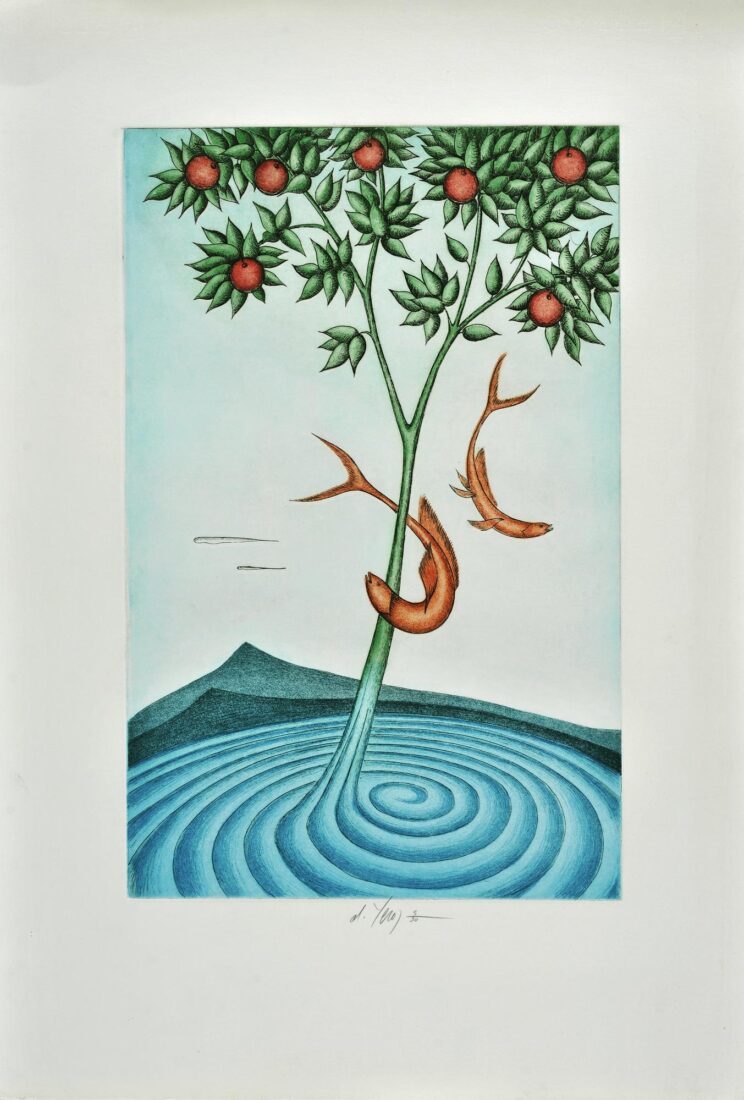
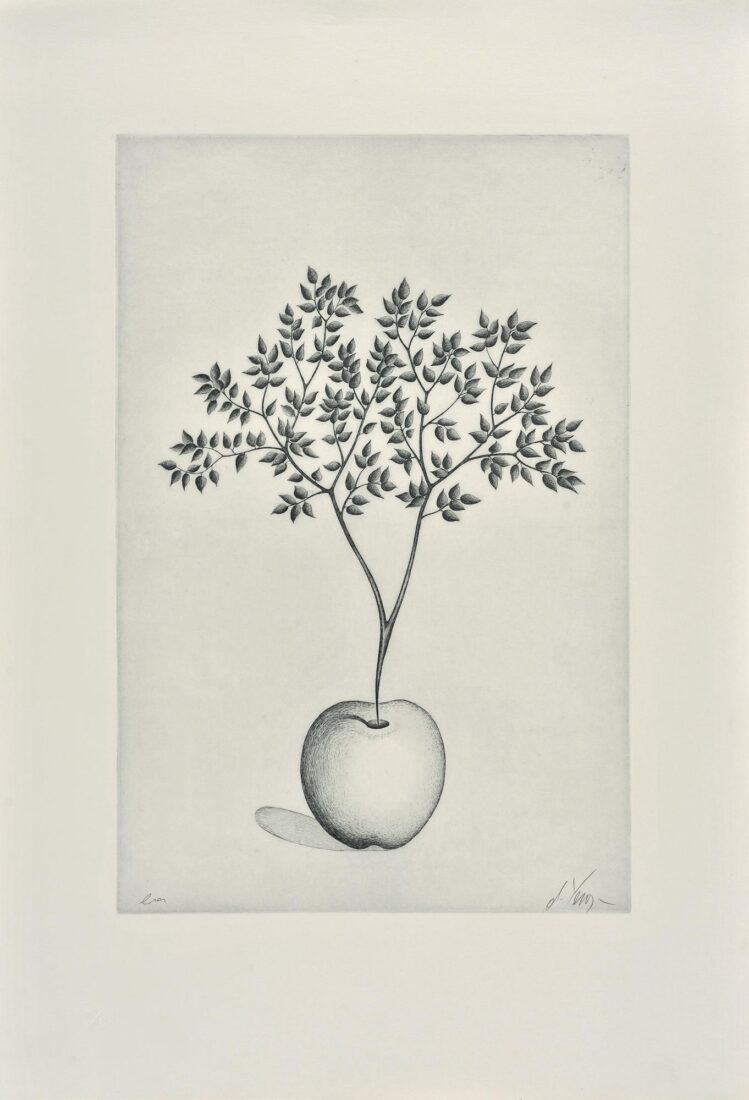
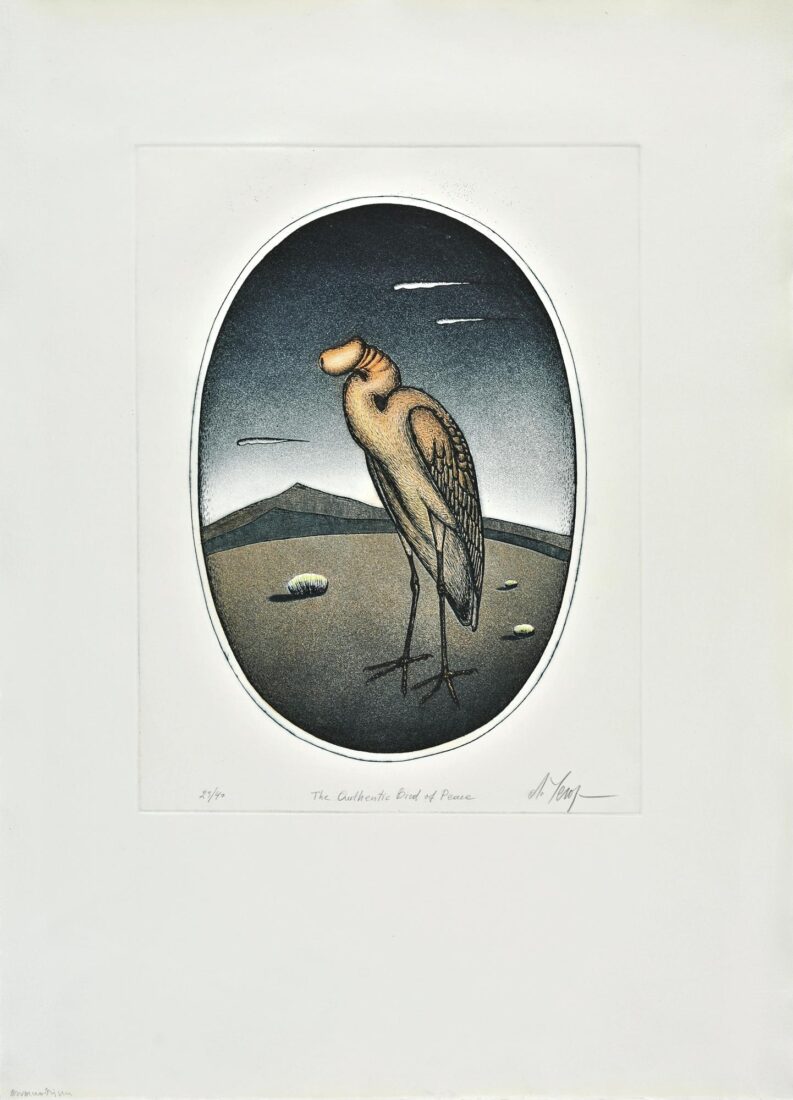
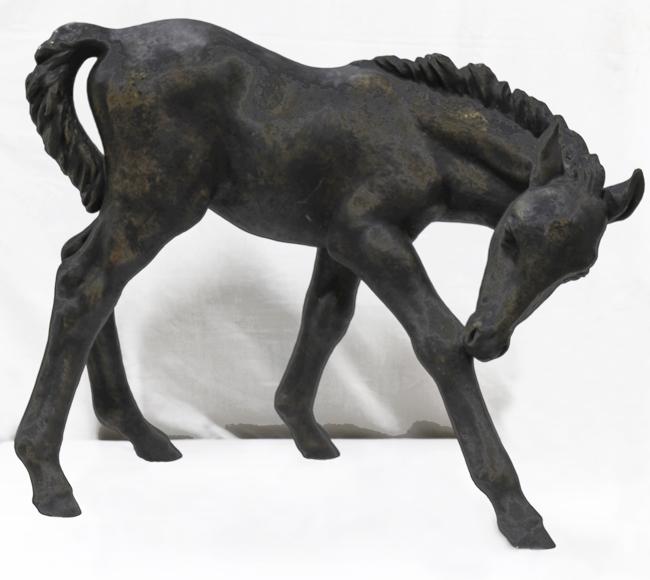
Among Greek sculptors, Frosso Efthymiadi stands alone in her sustained focus on animal subjects. Her dedication sprang from a belief that sculpture should be ‘an art that accompanies people in their everyday lives.’ Small works were intended for interior decoration; larger ones for private gardens or public spaces. ‘I truly love pieces that adorn the garden, and I believe animals are ideal for this,’ she remarked in a 1954 radio interview. ‘You’ll see that all my animals – the little goat, the donkey, the calf, the deer, the foal – are modelled with a realistic spirit, dictated by their intended setting. I sought to capture each animal’s characteristic movement and expression. Every time, I had to bring the live model into my studio. I’d let it roam freely about my garden […].’
Originally modelled in terracotta, her “Foal” embodies this vision. In 1939, Kostas Kotzias, minister for the Greater Metropolitan Area of Athens, commissioned Efthymiadi to decorate the city’s public gardens with terracotta animal sculptures, including “Foal”, destined for Kifissia grove. The project was ultimately halted by the outbreak of war.
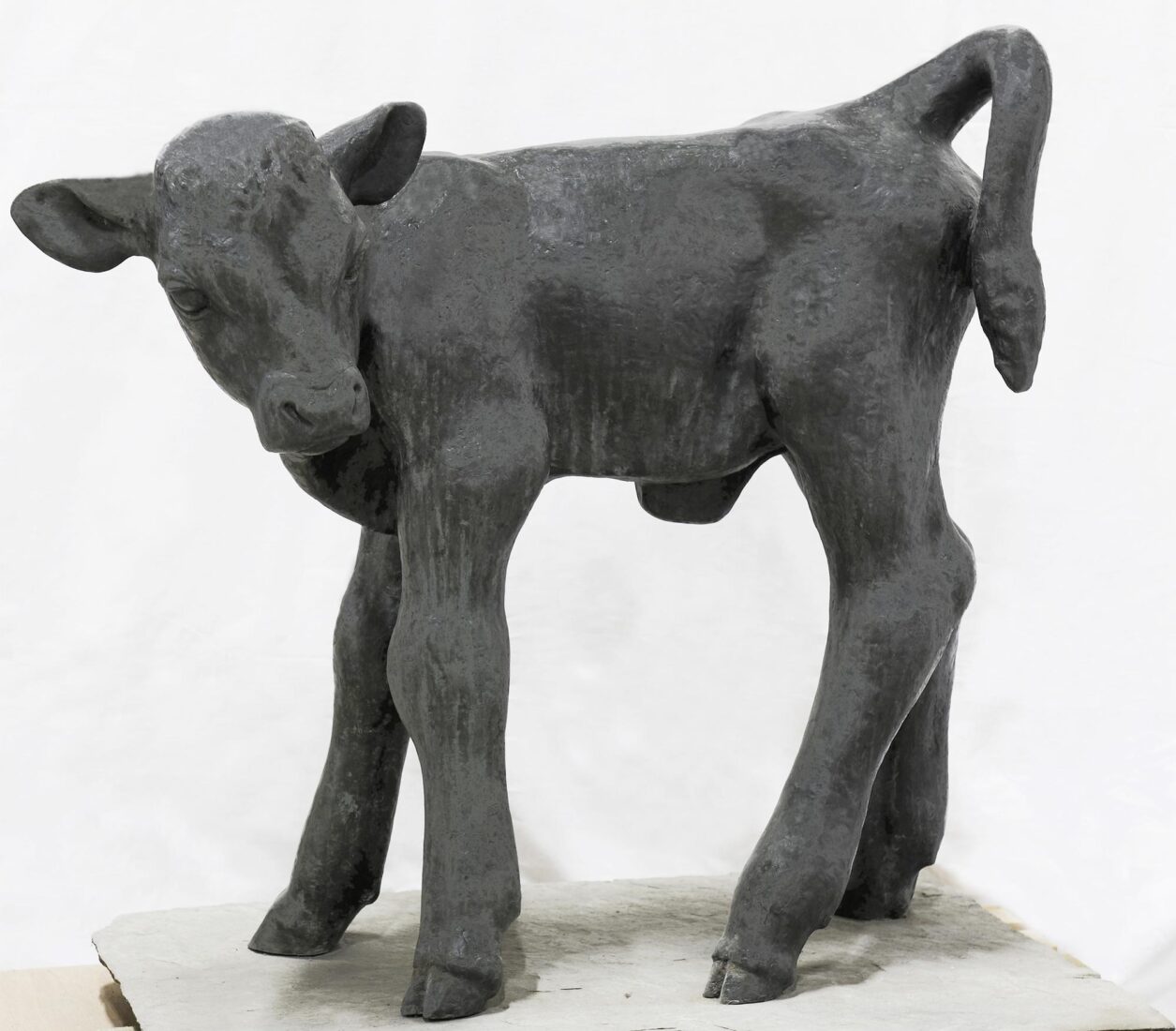
Among Greek sculptors, Frosso Efthymiadi stands alone in her sustained focus on animal subjects. Her dedication sprang from a belief that sculpture should be ‘an art that accompanies people in their everyday lives.’ Small works were intended for interior decoration; larger ones for private gardens or public spaces. ‘I truly love pieces that adorn the garden, and I believe animals are ideal for this,’ she remarked in a 1954 radio interview. ‘You’ll see that all my animals – the little goat, the donkey, the calf, the deer, the foal – are modelled with a realistic spirit, dictated by their intended setting. I sought to capture each animal’s characteristic movement and expression. Every time, I had to bring the live model into my studio. I’d let it roam freely about my garden […].’
Originally modelled in terracotta, her “Calf” embodιεσ this vision. In 1939, Kostas Kotzias, minister for the Greater Metropolitan Area of Athens, commissioned Efthymiadi to decorate the city’s public gardens with terracotta animal sculptures, including “Calf”, destined for Pangrati grove. The project was ultimately halted by the outbreak of war.

In the mid-Thirties, Apartis turned his interest to the making of animal sculpture, studying at the Paris Zoological Garden. Occupied since then, from time to time, with the same subject, in 1955 he made “Female Dog”, using “Duchess”, the dog of a neighbor in Paris, as his model.
The animal, despite the fact it’s motionless, gives the impression of being in a state of complete preparedness, with its pricked ears and muzzle jutting. Guided by ancient art, but having a living model before him as well, Apartis did not expend himself in descriptive details, but moulded a sturdy body with smooth surfaces, under which is outlined the powerful skeleton. The animal’s pose, with its legs parallel to each other, the slight turn of the head to the right and the tail touching the legs, as well as the moulding of the sturdy body itself, bring to mind one of the most important works of ancient art, namely the Etruscan “She-Wolf” in the Capitoline Museum (500-480 BC), while the jutting head had its, albeit distant, model of a dog from the Sanctuary of Artemis in Vravrona (530-520 BC), now in the Acropolis Museum, which, with its body tensed and its legs spread, is ready to attack.
